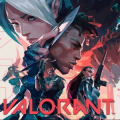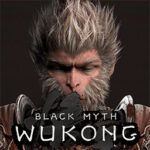Popular Now
Introduction
While Valorant launched with a solid foundation of 10 agents, it's the post-launch additions that have fundamentally reshaped how the game is played at all levels. From Killjoy to Harbor, each new agent has not just added variety but has revolutionized fundamental aspects of tactical shooter gameplay, creating new strategies and counterplay opportunities that were previously impossible.

The Initial Agent Philosophy
When Valorant launched in 2020, its original roster followed relatively traditional tactical shooter roles: duelists for entry, sentinels for defense, and controllers for space manipulation. The design philosophy emphasized clarity and readability, with abilities that complemented gunplay without overshadowing it.
These initial designs set clear boundaries for what abilities could and couldn't do, establishing a framework that would later be carefully expanded and challenged by new agent releases.
The Sentinel Evolution
Killjoy's Impact
- Introduction of true area denial
- Multi-ability synergy requirements
- Information gathering revolution
The release of Killjoy marked Valorant's first post-launch agent and set a precedent for how new agents would push design boundaries. Her ability to control space without direct interaction created new defensive paradigms that teams had to adapt to.
The Controller Renaissance
Harbor and Astra's introductions completely redefined what controller agents could do. These agents brought unprecedented levels of map control and strategic depth, forcing teams to reconsider their fundamental approach to site execution and defense.
The shift from smoke-focused controllers to agents with dynamic map control abilities created new strategic layers that elevated Valorant's tactical depth beyond traditional shooter conventions.
The Duelist Paradigm Shift
Modern Duelist Design
- Neon's mobility innovations
- Yoru's deception mechanics
- ISO's gunplay integration
Strategic Impact
- Entry patterns evolution
- Utility usage timing
- Team composition changes
The evolution of duelist design showcased Riot's growing confidence in pushing conventional boundaries while maintaining competitive integrity.

The Information Game Revolution
Information Gathering Evolution
- Fade's reveal mechanics
- Sova's recon dominance
- Cypher's intel control
The way information is gathered and shared has become increasingly sophisticated with each new agent release. Teams must now manage an complex web of information warfare that goes far beyond traditional tactical shooter mechanics.
Ultimate Ability Power Creep
One of the most significant impacts of new agent releases has been the evolution of ultimate abilities. Each new agent has introduced increasingly impactful ultimate abilities that can swing rounds decisively.
The power level of these abilities has forced teams to develop entirely new strategies around ultimate economy and timing, creating a meta-game within the larger tactical framework.
The Mobility Revolution
Movement Abilities
- Jett's dominance
- Raze's vertical control
- Chamber's teleport impact
Map Design Influence
- Vertical space utilization
- Off-angle possibilities
- Rotation timing changes
Counter-Strategy Development
The introduction of each new agent has sparked waves of innovation in counter-strategy development. Teams have had to become increasingly adaptable, developing multiple strategies to deal with various agent combinations.
This constant evolution has created a dynamic meta where no single strategy remains dominant for long, keeping the competitive scene fresh and engaging.

The Pro Scene Impact
Tournament Meta Shifts
- Regional preferences
- Map-specific compositions
- Utility combination discoveries
Practice Evolution
- Scrim approach changes
- Strategy development time
- Team specialization trends
Economy Game Changes
The introduction of new agents has significantly impacted how teams manage their economy. Different ability costs and ultimate impact levels have created new considerations for round-to-round decision making.
Teams must now balance traditional gun economy with ability usage and ultimate charging strategies, creating more complex economic decisions than ever before.
The Future of Agent Design
Design Space Exploration
- Remaining possibilities
- Role hybridization
- Mechanical innovations
The continued evolution of agent design suggests that Riot still sees significant unexplored territory in their design space, promising continued innovation in future releases.

Conclusion
The evolution of Valorant's agent roster represents one of the most successful examples of post-launch content expanding and enriching a game's strategic depth while maintaining competitive integrity. Each new agent has contributed to creating a uniquely complex and engaging tactical shooter experience that continues to evolve.


















